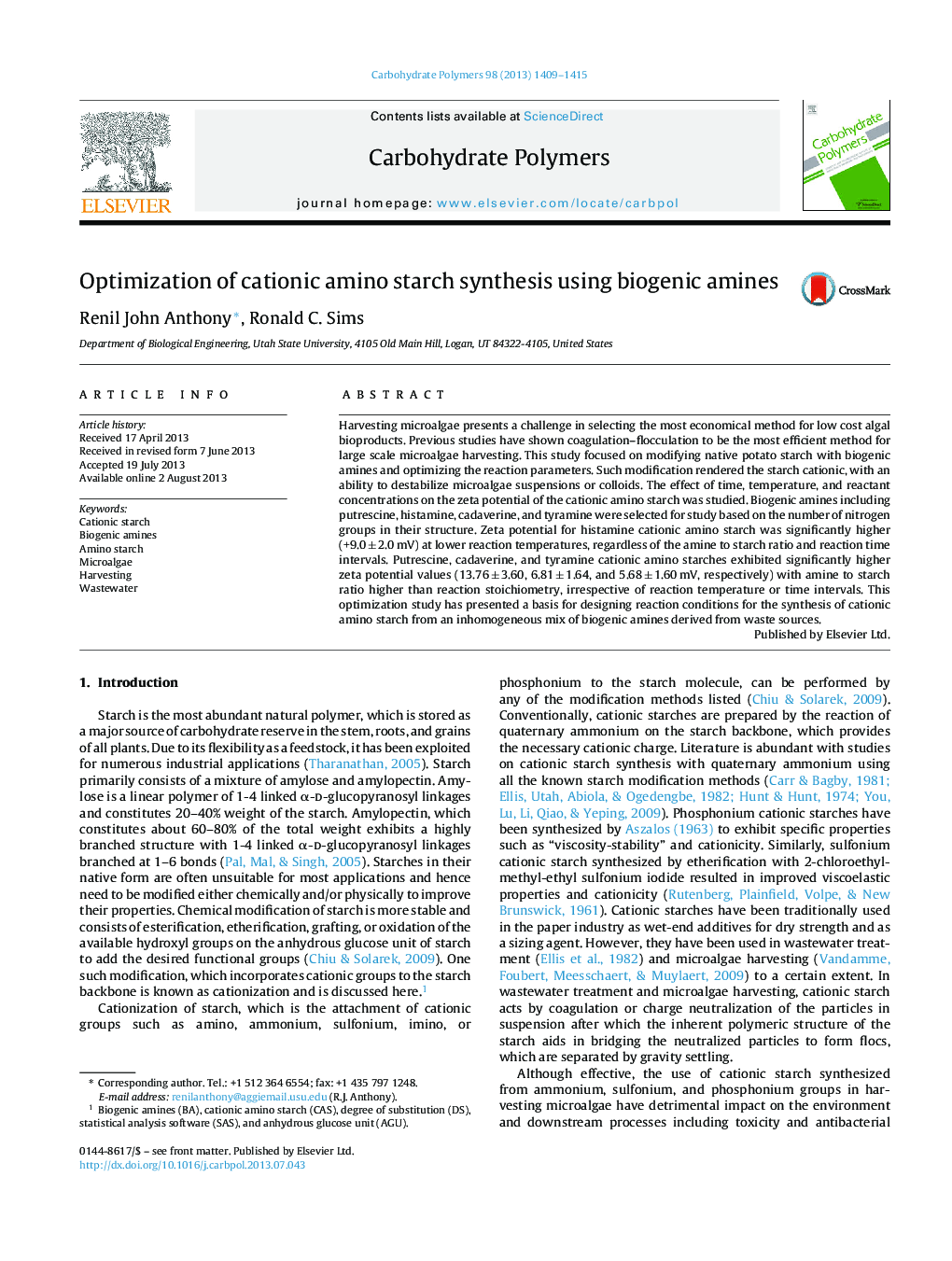| Article ID | Journal | Published Year | Pages | File Type |
|---|---|---|---|---|
| 10601644 | Carbohydrate Polymers | 2013 | 7 Pages |
Abstract
Harvesting microalgae presents a challenge in selecting the most economical method for low cost algal bioproducts. Previous studies have shown coagulation-flocculation to be the most efficient method for large scale microalgae harvesting. This study focused on modifying native potato starch with biogenic amines and optimizing the reaction parameters. Such modification rendered the starch cationic, with an ability to destabilize microalgae suspensions or colloids. The effect of time, temperature, and reactant concentrations on the zeta potential of the cationic amino starch was studied. Biogenic amines including putrescine, histamine, cadaverine, and tyramine were selected for study based on the number of nitrogen groups in their structure. Zeta potential for histamine cationic amino starch was significantly higher (+9.0 ± 2.0 mV) at lower reaction temperatures, regardless of the amine to starch ratio and reaction time intervals. Putrescine, cadaverine, and tyramine cationic amino starches exhibited significantly higher zeta potential values (13.76 ± 3.60, 6.81 ± 1.64, and 5.68 ± 1.60 mV, respectively) with amine to starch ratio higher than reaction stoichiometry, irrespective of reaction temperature or time intervals. This optimization study has presented a basis for designing reaction conditions for the synthesis of cationic amino starch from an inhomogeneous mix of biogenic amines derived from waste sources.
Related Topics
Physical Sciences and Engineering
Chemistry
Organic Chemistry
Authors
Renil John Anthony, Ronald C. Sims,
